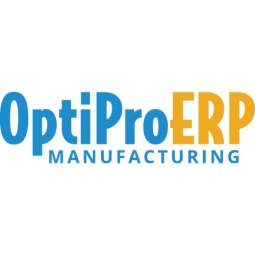Download PDF
Qvella's Transition to Full-Scale Production with OptiProERP
Technology Category
- Functional Applications - Enterprise Resource Planning Systems (ERP)
- Platform as a Service (PaaS) - Device Management Platforms
Applicable Industries
- Electronics
- Healthcare & Hospitals
Use Cases
- Additive Manufacturing
- Manufacturing Process Simulation
Services
- System Integration
The Challenge
Qvella Corp., a rapidly growing medical device company, was on the brink of transitioning from beta into full-scale commercial production. However, they lacked an Enterprise Resource Planning (ERP) system that could help them scale effectively. Their operations were highly regulated and mission-critical, requiring meticulous documentation and traceability. These processes demanded a system with robust functionality. The company had developed technology for the rapid detection of infectious agents in direct blood samples, aiming to reduce diagnostic time frames, lower costs, and ultimately save lives. Therefore, they needed an ERP system that could meet all regulatory standards such as FDA and MDSAP in an ISO13485 environment.
About The Customer
Qvella Corp. is a fast-growing medical device company that has developed technology enabling the rapid detection of infectious agents in direct blood samples. The company is committed to shortening diagnostic time frames and lowering costs in an attempt to save lives. As they transitioned from beta into full-scale commercial production, they required an ERP system that could meet the stringent regulatory standards of the medical device industry, such as FDA and MDSAP in an ISO13485 environment. The management team, all of whom have previously used ERP systems, were looking for a user-friendly system with robust functionality to manage their high growth and ultimate success.
The Solution
After evaluating several ERP systems, including Acumatica, Qvella chose OptiProERP with SAP Business One. The other systems could not meet the advanced manufacturing functionality that OptiProERP provided. Qvella's seasoned management team, all of whom had previous experience with ERP systems, found OptiProERP to be user-friendly and appreciated its out-of-the-box functionality. They were confident that the system would meet all of their challenges. OptiProERP spent time understanding Qvella's business and provided a knowledgeable implementation team. The system is now providing Qvella with an operational foundation that is critical to managing its high growth and ultimate success. It provides Qvella with the critical reports needed for their industry and satisfies their complete business management needs.
Operational Impact
Related Case Studies.

Case Study
Remote Temperature Monitoring of Perishable Goods Saves Money
RMONI was facing temperature monitoring challenges in a cold chain business. A cold chain must be established and maintained to ensure goods have been properly refrigerated during every step of the process, making temperature monitoring a critical business function. Manual registration practice can be very costly, labor intensive and prone to mistakes.

Case Study
Hospital Inventory Management
The hospital supply chain team is responsible for ensuring that the right medical supplies are readily available to clinicians when and where needed, and to do so in the most efficient manner possible. However, many of the systems and processes in use at the cancer center for supply chain management were not best suited to support these goals. Barcoding technology, a commonly used method for inventory management of medical supplies, is labor intensive, time consuming, does not provide real-time visibility into inventory levels and can be prone to error. Consequently, the lack of accurate and real-time visibility into inventory levels across multiple supply rooms in multiple hospital facilities creates additional inefficiency in the system causing over-ordering, hoarding, and wasted supplies. Other sources of waste and cost were also identified as candidates for improvement. Existing systems and processes did not provide adequate security for high-cost inventory within the hospital, which was another driver of cost. A lack of visibility into expiration dates for supplies resulted in supplies being wasted due to past expiry dates. Storage of supplies was also a key consideration given the location of the cancer center’s facilities in a dense urban setting, where space is always at a premium. In order to address the challenges outlined above, the hospital sought a solution that would provide real-time inventory information with high levels of accuracy, reduce the level of manual effort required and enable data driven decision making to ensure that the right supplies were readily available to clinicians in the right location at the right time.

Case Study
Gas Pipeline Monitoring System for Hospitals
This system integrator focuses on providing centralized gas pipeline monitoring systems for hospitals. The service they provide makes it possible for hospitals to reduce both maintenance and labor costs. Since hospitals may not have an existing network suitable for this type of system, GPRS communication provides an easy and ready-to-use solution for remote, distributed monitoring systems System Requirements - GPRS communication - Seamless connection with SCADA software - Simple, front-end control capability - Expandable I/O channels - Combine AI, DI, and DO channels

Case Study
Driving Digital Transformations for Vitro Diagnostic Medical Devices
Diagnostic devices play a vital role in helping to improve healthcare delivery. In fact, an estimated 60 percent of the world’s medical decisions are made with support from in vitrodiagnostics (IVD) solutions, such as those provided by Roche Diagnostics, an industry leader. As the demand for medical diagnostic services grows rapidly in hospitals and clinics across China, so does the market for IVD solutions. In addition, the typically high cost of these diagnostic devices means that comprehensive post-sales services are needed. Wanteed to improve three portions of thr IVD:1. Remotely monitor and manage IVD devices as fixed assets.2. Optimizing device availability with predictive maintenance.3. Recommending the best IVD solution for a customer’s needs.







